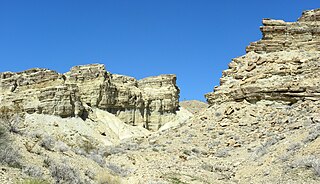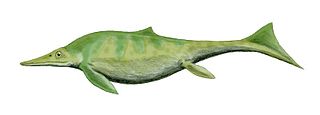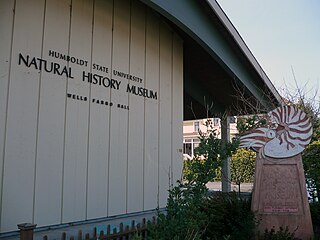 W
WPaleontology in California refers to paleontologist research occurring within or conducted by people from the U.S. state of California. California contains rocks of almost every age from the Precambrian to the Recent. Precambrian fossils are present but rare in California.
 W
WAlbicetus is a genus of stem-sperm whales that lived during the Miocene Epoch, around 15 million years ago, and was discovered in Santa Barbara, California in 1909. It was categorized for decades as belonging to a group of extinct walruses erroneously thought to be sperm whales. It was named Albicetus, meaning "white whale", is a reference to the leviathan in Herman Melville's classic 1851 novel Moby-Dick.
 W
WAletopelta coombsi is an herbivorous ankylosaurian ornithischian dinosaur that during the Late Cretaceous lived in the area of what is now Southern California.
 W
WAtocetus is an extinct genus of pontoporiid dolphin found in Miocene-age marine deposits in Peru and California.
 W
WAugustynolophus is an extinct genus of herbivorous saurolophine hadrosaur dinosaur which was discovered in the Moreno Formation in California, dating to the late Maastrichtian age, making it one of the last dinosaurs known from the fossil record before the Cretaceous–Paleogene extinction event.
 W
WThe Aztec Sandstone is an Early Jurassic geological formation of primarily eolian sand from which fossil pterosaur tracks have been recovered. The formation is exposed in the Mojave Desert of Arizona, California and Nevada.
 W
WThe Barstow Formation is a series of limestones, conglomerates, sandstones, siltstones and shales exposed in the Mojave Desert near Barstow in San Bernardino County, California.
 W
WBlieckaspis priscillae is a pteraspidid heterostracan agnathan from the Middle Devonian of North America.
 W
WThe Budden Canyon Formation is the name of a sedimentary rock formation in California of Cretaceous (Berriasian-Turonian) age.
 W
WThe Buena Vista Museum of Natural History & Science is a natural history museum in Bakersfield, California. It is located in the Arts district, downtown. The museum focuses on three areas: Geology, Anthropology, and Paleontology.
 W
WCalifornosaurus is an extinct genus of ichthyosaur, an extinct marine reptile, from the Lower Hosselkus Limestone of California.
 W
WThe Carpinteria Tar Pits are a series of natural asphalt lakes situated in the southern part of Santa Barbara County in southern California.
 W
WHancock Park is a city park in the Miracle Mile section of the Mid-Wilshire neighborhood in Los Angeles, California.
 W
WHumboldt State University Natural History Museum is a natural history museum in Arcata, California in the United States.
 W
WIgnacius is a genus of extinct mammal from the early Cenozoic era. This genus is present in the fossil record from around 62-33 Ma. The earliest known specimens of Ignacius come from the Torrejonian of the Fort Union Formation, Wyoming and the most recent known specimen of Ignacius was found in the Medicine Pole Hills of North Dakota. Ignacius is one of ten genera within the family Paromomyidae, the longest living family of any plesiadapiforms, persisting for around 30 Ma during the Paleocene and Eocene epochs. The analyses of postcranial fossils by paleontologists suggest that members of the family Paromomyidae, including the genus Ignacius, most likely possessed adaptations for arboreality.
 W
WLa Brea Tar Pits are a group of tar pits around which Hancock Park was formed in urban Los Angeles. Natural asphalt has seeped up from the ground in this area for tens of thousands of years. The tar is often covered with dust, leaves, or water. Over many centuries, the tar preserved the bones of trapped animals. The George C. Page Museum is dedicated to researching the tar pits and displaying specimens from the animals that died there. La Brea Tar Pits is a registered National Natural Landmark.
 W
WMaturango Museum is located in Ridgecrest, California. The museum is best known for the guided tours of the Coso Rock Art District located on China Lake Naval Weapons Station. The museum offers exhibits and displays featuring both the natural and the cultural history and diversity of the Northern Mojave Desert with exhibits of animals, plants, rocks and minerals, Native American artifacts, and contemporary arts and crafts.
 W
WThe McKittrick Tar Pits are a series of natural asphalt lakes situated in the western part of Kern County in southern California. The pits are the most extensive asphalt lakes in the state.
 W
WThe Natural History Museum of Los Angeles County is the largest natural and historical museum in the western United States. Its collections include nearly 35 million specimens and artifacts and cover 4.5 billion years of history. This large collection is comprised not only of specimens for exhibition, but also of vast research collections housed on and offsite.
 W
WNeoparadoxia is an extinct genus of large, herbivorous aquatic desmostylian mammals from the Miocene of North America.
 W
WLa Brea Tar Pits are a group of tar pits around which Hancock Park was formed in urban Los Angeles. Natural asphalt has seeped up from the ground in this area for tens of thousands of years. The tar is often covered with dust, leaves, or water. Over many centuries, the tar preserved the bones of trapped animals. The George C. Page Museum is dedicated to researching the tar pits and displaying specimens from the animals that died there. La Brea Tar Pits is a registered National Natural Landmark.
 W
WParamylodon is an extinct genus of ground sloth of the family Mylodontidae endemic to North America during the Pliocene through Pleistocene epochs, living from around ~4.9 Mya–11,000 years ago. It is also known as Harlan's ground sloth.
 W
WThe Petrified Forest is a petrified forest located in Sonoma County, California, in the United States. It is the only petrified forest in California from the Pliocene. It also has the largest petrified trees in the world. The forest is now open to the public to visit after restoration from damage caused by the Napa and Sonoma fires of 2017.
 W
WThe Purisima Formation is a geologic formation in California. It preserves fossils dating from the Late Miocene to Early Pleistocene.
 W
WThe Raymond M. Alf Museum of Paleontology is part of The Webb Schools and is the only nationally accredited museum of paleontology on a secondary school campus in the United States. The museum has two circular 4,000 sq. ft. exhibition halls and 20,000 unique annual visitors. The collections number about 140,000 specimens, 95% of which were found by Webb students on fossil-collecting trips called “Peccary Trips,” expeditions usually centered in California, Utah, and Montana. The collections consist primarily of vertebrate, invertebrate, and track fossils and the museum's large track collection is widely recognized as one of the most diverse in the world.
 W
WThe San Diego Natural History Museum is a museum located in Balboa Park in San Diego, California. It was founded in 1874 as the San Diego Society of Natural History. It is the second oldest scientific institution west of the Mississippi and the oldest in Southern California. The present location of the museum was dedicated on January 14, 1933. A major addition to the museum was dedicated in April 2001, doubling exhibit space.
 W
WSan Timoteo Canyon is a river valley canyon southeast of Redlands, in the far northwestern foothills of the San Jacinto Mountains in the Inland Empire region of Southern California.
 W
WThe Santa Cruz Mudstone is a geologic formation in California. The siliceous organic mudstones of the formation were deposited in deep water and fluvial environments. The formation overlies the Santa Margarita Sandstone and is overlain by the Purisima Formation. The Santa Cruz Mudstone was formerly considered part of the Monterey Formation. The formation preserves bivalve and echinoid fossils as well as vertebrates of Parabalaenoptera baulinensis and Otodus megalodon. The formation dates back to the Late Miocene period.
 W
WThe Santa Cruz Museum of Natural History, also known affectionately by locals as "the Whale Museum", is one of the earliest museums in the state of California. Founded from the Laura Hecox collection in 1905, the Museum's collections grew extensively throughout the years, acquiring many Native American and archaeological artifacts, as well as natural history specimens. Currently, the Museum is housed in a Carnegie Library, named after the Carnegie philanthropic foundation that funded the construction of the library in 1915.
 W
WThe Santiago Formation is a geologic formation in Orange and northwestern San Diego County, California. The siltstones, mudstones and sandstones of the formation preserve fossils of Walshina esmaraldensis, dating back to the Late Eocene to Late Oligocene periods.
 W
WSemirostrum ceruttii is an extinct porpoise that lived between 5 and 1.5 million years ago (Ma), during the Pliocene epoch. The species is highly distinctive due to the extremely long symphysis on the lower jaw, reaching lengths of 85 centimeters (33.46 inches), while that of a modern porpoise are 1–2 centimeters (0.39–0.79 inches) long. The main hypothesis regarding its use is that it probed along the sediment in the murky estuaries and shores of what is now California in search of food, which would easily be scooped up the symphysis and into the jaws. The etymology of the name means "half beak", referring to the upper jaw being half the length of the lower.
 W
WShastasauridae is an extinct family of Triassic ichthyosaurs that includes the genera Shastasaurus and Himalayasaurus. Many other Triassic ichthyosaurs have been assigned to Shastasauridae in the past, but recent phylogenetic analyses suggest that these species form an evolutionary grade of early ichthyosaurs rather than a true clade or evolutionary grouping that can be called Shastasauridae. Shastasauridae was named by American paleontologist John Campbell Merriam in 1895 along with the newly described genus Shastasaurus. In 1999, Ryosuke Motani erected the clade Shastasauria to include Shastasaurus, Shonisaurus, and several other traditional shastasaurids, defining it as a stem-based taxon including "all merriamosaurians more closely related to Shastasaurus pacificus than to Ichthyosaurus communis." He also redefined Shastasauridae as a node-based taxon including "the last common ancestor of Shastasaurus pacificus and Besanosaurus leptorhynchus, and all its descendants" and Shastasaurinae, which Merriam named in 1908, as a stem taxon including "the last common ancestor of Shastasaurus and Shonisaurus, and all its descendants." In an alternative classification scheme, paleontologist Michael Maisch restricted Shastasauridae to the genus Shastasaurus and placed Shonisaurus and Besanosaurus in their own monotypic families, Shonisauridae and Besanosauridae.
 W
WThalattosaurus meaning "sea lizard," from the Attic Greek thalatta (θάλαττα), "sea," and sauros (σαῦρος), "lizard," is an extinct genus of marine reptile in the family Thalattosauroidea. They were aquatic diapsids that are known exclusively from the Triassic period. It was a 2 metres (6.6 ft) long shellfish-eating reptile with paddle-like limbs and a down-turned rostrum occurring in the Lower and Middle Triassic Sulphur Mountain Formation of British Columbia as well as the Upper Triassic Hosselkus Limestone of California. It has gained notoriety as a result of studies on general diapsid phylogeny.
 W
WThe University of California Museum of Paleontology (UCMP) is a paleontology museum located on the campus of the University of California, Berkeley.
 W
WThe Western Science Center (WSC), formerly the Western Center for Archaeology & Paleontology, is a museum located near Diamond Valley Lake in Hemet, California. The WSC is home to a large collection of Native American artifacts and Ice Age fossils that were unearthed at Diamond Valley Lake, including "Max", the largest mastodon found in the western United States, and "Xena", a Columbian mammoth.